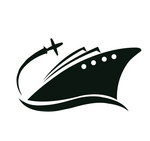OUR SERVICES
Sludge and Deslopping Survey
A sludge and deslopping survey is a type of marine survey that is conducted to assess the quantity and quality of sludge and slop onboard a vessel. Sludge refers to the residual oil that accumulates at the bottom of fuel storage tanks, while slop refers to the mixture of water and residual oil that is generated during tank cleaning operations.
The purpose of a sludge and deslopping survey is to ensure that the vessel is complying with environmental regulations, particularly those related to the discharge of sludge and slop into the ocean. In most cases, vessels are required to dispose of their sludge and slop at designated facilities on land or in port, rather than discharging them at sea.
During a sludge and deslopping survey, our surveyor will typically:
- – Measure the volume of sludge and slop on board the vessel
- – Assess the quality of the sludge and slop, including the levels of water, sediment, and oil content
- – Determine the most appropriate disposal method for the sludge and slop, based on local regulations and industry best practices.
- – The results of a sludge and deslopping survey are typically recorded in a report, which may be used to demonstrate compliance with environmental regulations and to identify opportunities for improvement in the vessel’s waste management practices.
It is an important tool for ensuring that vessels are complying with environmental regulations and properly managing their waste streams. By conducting regular surveys and following best practices for waste management, vessel operators can help protect the environment and maintain the long-term sustainability of the maritime industry.
OUR MISSION
Quality, Integrity, Reliability & Promptness.
Our mission is to deliver highly personalised services to all our clients, optimised for their utmost convenience.
With our assurance in QUALITY, INTEGRITY, RELIABILITY and PROMPTNESS, we ensure that our clients’ interests are always well-protected and their surveying needs are met.
